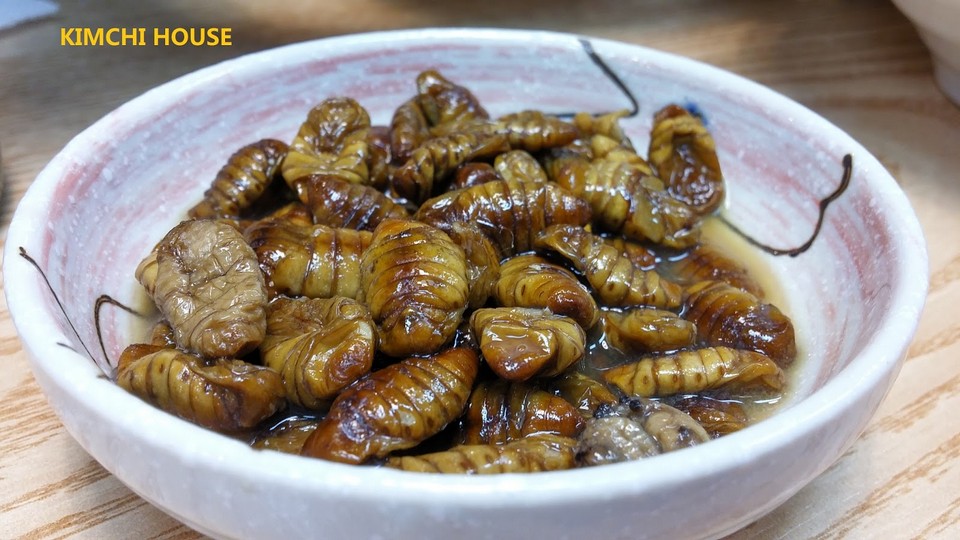Beondegi is a popular Korean snack food consisting of steamed silkworm pupae. It is served in paper cups with toothpick skewers, and it has a unique taste and aroma.
Though some people love it from the first bite, others find it to be more of an acquired taste. It is a traditional street food, and it also comes in canned form in supermarkets.
Overview of Beondegi as a Food Source
Beondegi, or boiled silkworm pupae, is a food source that is popular in South Korea. This insect-based snack can be found at street food stalls and can also be canned.
Beondegi is a popular Korean delicacy that can be served either steamed or boiled. It has a distinctive taste and smell that is pungent and earthy.
This edible insect is a nutritious source of protein, vitamins, fiber and minerals. It also provides a great source of energy for people on diets or who are looking to lose weight.
Culinary Uses and Traditional Dishes
Beondegi is a classic South Korean snack that comes in boiled or steamed form, and is often eaten in paper cups with wooden toothpicks. Though it’s considered an acquired taste, this is one of the most popular street foods in Korea.
The silkworm pupae is seasoned, and they are often served with hot spices, salt, and sugar. The dish is typically sold at street stalls in small cups, and it can also be found in canned form at grocery stores and convenience stores.
Although it may not seem appetizing, beondegi is a protein-rich food that has become an increasingly popular option for vegans and vegetarians. This is in part due to its nutritional value, but it is also a testament to the fact that insects are becoming a more sustainable source of food.
Availability and Market Trends
A walk through any South Korean market, and you can almost hear the steaming hiss of silkworm pupae frying. Known as beondegi, this is an insect-based street food that has become popular in the country.
Beondegi is boiled or steamed, seasoned and served in small cups. It is available on street stalls throughout the country, and can also be found in canned form at convenience stores.
While some people may find beondegi repulsive, it’s a nutritious, low-calorie snack that can be enjoyed by all ages. Despite its popularity, it’s losing some ground to more palatable snacks like pastries.
Health Benefits and Concerns
Beondegi is a big deal in South Korea, but it’s not as popular abroad as it once was. For one thing, it’s a good source of protein, vitamins and fiber. Plus, it’s easy to prepare and cook, making it a healthy snack for the entire family. The best part is that it doesn’t have any negative health consequences, as it’s a natural food.
There are two main ways to eat Beondegi: freshly roasted and dried, or canned. The most popular option is the latter, which can be found at many grocery and convenience stores. As you might expect, it’s also the cheapest and most convenient. The best way to try it out is to visit South Korea. There, you’ll be able to sample the finest beondegi in a wide range of flavors and sizes.
Sustainability Issues
In Korea, beondegi is a common snack sold on street stands and in grocery stores. It is a protein-rich, low-calorie food that has a unique flavor and texture. It can be eaten either boiled or steamed and is served in paper cups with skewers.
However, sustainability issues surrounding the harvesting and consumption of beondegi are a growing concern. The environmental impacts of raising livestock are well-known, and the need for more sustainable sources of protein is a growing concern worldwide. As a result, beondegi is being increasingly recognized as a sustainable protein source. It is also being considered by chefs as an alternative to meat, and many chefs are now promoting beondegi in their menus. As a result, beondegi may become a popular addition to the diet of many people in the future.

